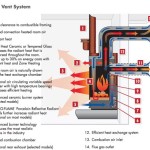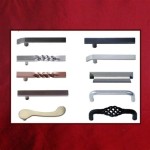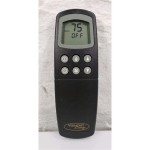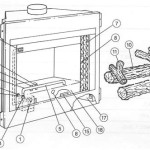Cast Iron Fireplace Tools: A Global Perspective
Cast iron fireplace tools represent a blend of functionality and artistry, providing essential implements for managing fires while often serving as decorative accents within a hearth setting. These tools, forged primarily from cast iron, demonstrate durability and heat resistance, characteristics vital for safe and efficient fireplace use. The global market for these tools is diverse, with manufacturing and stylistic influences seen across regions like Adelaide, Santa Catarina, Brazil, and the USA. Examining the characteristics, manufacturing processes, and regional nuances of cast iron fireplace tools offers a comprehensive understanding of their significance and value.
Historically, cast iron fireplace tools emerged as fireplace design evolved from open hearths to enclosed fireplaces. The need arose for tools that could safely rearrange logs, remove ash, and control the fire's intensity. Early examples were simple, utilitarian designs, focusing primarily on functionality. Over time, however, craftsmanship became increasingly important, with artisans incorporating decorative elements and intricate patterns into the tool designs. This evolution reflects a confluence of practical requirements and aesthetic considerations, resulting in the diverse range of tools available today.
The composition of cast iron is a key factor in the performance and longevity of fireplace tools. Cast iron is an alloy of iron containing a relatively high percentage of carbon (typically 2-4%), along with silicon and trace amounts of other elements. This composition gives cast iron its characteristic properties: high compressive strength, good damping capacity, and the ability to be cast into complex shapes. However, the carbon content also makes cast iron brittle and susceptible to corrosion if not properly treated. Consequently, various surface treatments, such as painting, powder coating, or applying a protective oil finish, are employed to enhance durability and prevent rust.
Key Properties of Cast Iron Fireplace Tools
The selection of cast iron as the primary material for fireplace tools is based on several key properties that make it ideally suited for this application. These properties directly influence the tool's performance, safety, and lifespan within the demanding environment of a fireplace.
Heat Resistance: Cast iron possesses exceptional heat resistance, allowing it to withstand the high temperatures generated by a fireplace without deforming or weakening. This is a critical attribute, as the tools are frequently exposed to direct flames and radiant heat. The high thermal mass of cast iron also means it heats up relatively slowly but retains heat for an extended period, making it effective for manipulating burning logs and embers.
Durability: Cast iron is renowned for its robustness and resistance to wear and tear. Fireplace tools are subjected to physical stress as they are used to move heavy logs, rake ash, and poke burning embers. The inherent strength of cast iron ensures that the tools can withstand these stresses without bending, breaking, or cracking, providing reliable performance over years of use. Furthermore, the density of the material contributes to its stability and balance, making the tools easier to handle and control.
Weight and Stability: The weight of cast iron tools confers a degree of stability that is essential for safe and effective fireplace management. A heavier tool is less likely to slip or move unintentionally, providing greater control when maneuvering logs or removing ash. This weight also contributes to the tool's overall robustness, making it feel substantial and well-made in the hand.
Manufacturing Processes and Design Variations
The manufacturing of cast iron fireplace tools involves a range of processes, from traditional sand casting to more modern techniques. The specific processes employed often depend on the complexity of the design and the scale of production. Sand casting remains a common method, where molten cast iron is poured into a mold made of sand. Once the iron cools and solidifies, the mold is broken away, revealing the rough casting. Subsequent finishing processes, such as grinding, polishing, and surface treatment, are then performed to refine the tool's shape and appearance.
Design variations in cast iron fireplace tools are extensive, reflecting diverse aesthetic preferences and functional requirements. Traditional designs often feature simple, elegant lines and a focus on functionality. These tools typically include a poker, shovel, brush, and tongs, each designed for a specific task. More elaborate designs may incorporate decorative elements such as scrolls, floral motifs, or animal figures, adding a touch of artistry to the fireplace setting. The handle design is another area where significant variation exists, with options ranging from simple wooden grips to intricately sculpted cast iron handles. Furthermore, the overall length and weight of the tools can vary depending on the intended application and the size of the fireplace.
The surface finish of cast iron fireplace tools also plays a crucial role in their appearance and durability. Common finishes include black paint, powder coating, and oiled finishes. Black paint provides a classic, understated look and helps to protect the iron from corrosion. Powder coating offers a more durable and scratch-resistant finish, available in a wide range of colors. Oiled finishes enhance the natural texture and color of the cast iron, while providing a degree of protection against rust. The choice of finish often depends on the desired aesthetic and the level of protection required.
Regional Influences: Adelaide, Santa Catarina, Brazil, and the USA
The production and style of cast iron fireplace tools are influenced by regional variations, reflecting local traditions, materials, and consumer preferences. Examining the characteristics of tools produced in Adelaide, Santa Catarina, Brazil, and the USA reveals distinct regional identities.
Adelaide, Australia: In Adelaide, there is a strong emphasis on craftsmanship and heritage. Fireplace tools often reflect a blend of traditional designs and modern aesthetics. The use of locally sourced materials may be a factor, and there might be a focus on creating durable, long-lasting tools that can withstand the harsh Australian climate. Designs could be influenced by the country's unique flora and fauna, with motifs incorporating native plants and animals. A focus on sustainability and environmentally friendly manufacturing practices might also be prevalent.
Santa Catarina, Brazil: Santa Catarina, located in southern Brazil, has a strong European heritage, particularly from German and Italian immigrants. This influence is often reflected in the design of cast iron products, including fireplace tools. One might find ornate, decorative styles reminiscent of European craftsmanship. Given Brazil's rich iron ore deposits, the availability and cost-effectiveness of raw materials might influence production scales and designs. The climate in Santa Catarina, which experiences distinct seasons, could also influence the design of fireplaces and, consequently, fireplace tools. Styles could cater to both colder winter climates and warmer summer temperatures.
Brazil (General): More broadly, Brazilian-made fireplace tools might incorporate local hardwoods in the handles, creating a warm and natural aesthetic. The availability of skilled metalworkers in certain regions of Brazil could lead to more intricate and detailed designs. Considerations for the tropical climate might also influence the finishes used, with a focus on rust-resistant coatings. The influence of indigenous Brazilian artistry could also be seen in the incorporation of tribal motifs or representations of native animals.
USA: In the USA, the market for cast iron fireplace tools is diverse, with a range of styles from traditional to contemporary. American-made tools often prioritize functionality and durability, reflecting a practical approach. There may also be a strong emphasis on historical accuracy, with reproductions of antique fireplace tools being popular. Regional variations within the USA are also evident, with designs reflecting local architectural styles and cultural traditions. For example, tools from the Northeast might reflect Colonial or Federal styles, while those from the Southwest might incorporate Native American or Spanish influences. The use of advanced manufacturing techniques, such as automated casting processes, is also common in the USA, leading to high production volumes and consistent quality.
The finishes applied to cast iron fireplace tools also vary regionally. In some areas, a focus on preserving the natural look of the cast iron might lead to the preference for oiled finishes, while in others, the emphasis on durability and low maintenance might favor powder-coated finishes. The choice of handle materials can also reflect regional preferences, with options ranging from traditional wood to modern synthetic materials. Ultimately, the regional influences on cast iron fireplace tools demonstrate the interplay between craftsmanship, cultural traditions, and consumer preferences.

Trademarks Journal Vol 72 No 3665

Polish Hill River Cultural Identity From Material Remains

Patio Outdoor Ceiling Fans Riverbend Home

Design Destination Aframe Kangaroo Valley Assembly Label

Blog Feed Portable Nc

Spring 2005 Society For Historical Archaeology
Historic Context Statement City Of Paramount October 2024

Blog Feed Portable Nc
Abstract Book

Portugal
Related Posts








